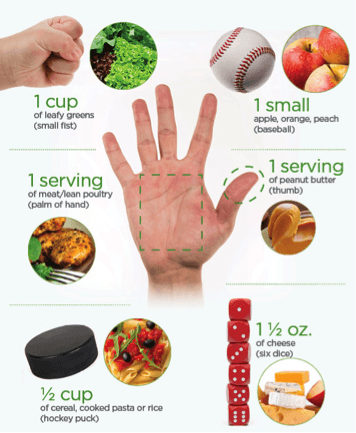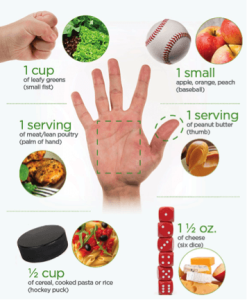
Oftentimes new clients come to us either brand new with no fitness experience or having tried on their own and failed. Either way joining a gym and starting a new fitness program can be intimidating and confusing. There are a lot of variables that will determine the success or failure of your client. It is our job as trainers to keep our clients motivated, make them feel comfortable, and get them results. The following tips will help you get your clients the best results possible.
Help Them Find Their “Why”
This may be the single most important thing a trainer can do to help their client reach their goals. In talking with your client it is important to find out why they are there. We need to find a deeper “why” than just “I want to lose weight.” Why do you want to lose the weight? Do you have a 10 year reunion coming up? Did your doctor diagnose you with diabetes and tell you to lose weight? Finding the real “why” and using that to motivate your client will give you a much higher success rate and client adherence to the program.

Teach Them Proper Portion Sizes
People are typically overweight due to an over abundance of calories consumed combined with sedentary lifestyles. One of the best ways to help a client eat the right amount (without going through the trouble of weighing everything) is to teach them what proper portion sizes look like. I use the following table to educate my clients on servings sizes.
Take Them Grocery Shopping
Since nutrition is such a big part of your clients success it is important to take them shopping and show them what foods are in line with their goals and which foods will prevent them from reaching their goals. I don’t like to use the terms “good” or “bad” foods because foods that are good for someone trying to gain muscle may not be good for someone trying to lose weight. When taking clients shopping it is important to go over the following:
Shop the Perimeter – The more nutritious foods like the fruits, vegetables, meats, dairy, and eggs are usually around the perimeter of the grocery store. The more processed foods like crackers, chips, etc are in the inside aisles.
How to Read Labels – It’s not only important to teach your clients about the calories, proteins, carbs, fats, and micronutrients on the label its also very important to teach them about the ingredients list. You should encourage them to choose foods without artificial flavors, artificial sweeteners, partially hydrogenated oils, high fructose corn syrup, and MSG (just to name a few).
When to Go Organic – Certain fruits and vegetables contain much more pesticide and toxic residues than others and some are relatively clean. Every year the Environmental Working Group puts out a list called the Dirty Dozen and Clean Fifteen with fruits and vegetables ranked on pesticide residues. On food with the highest pesticide residues it is more important to go organic.
Get Them Comfortable in the Gym
The gym can be an intimidating place for a newbie. Oftentimes your new clients have fears or apprehensions about going to the gym. They may be nervous about working out in front of people, not know how to use any of the equipment, or get self-conscious by comparing themselves to other gym goers. It is important to make your client feel at home in the gym. Here are a few tips to help them get comfortable:
Give Them a Tour – Knowing the layout of the gym and where everything is will help them get adjusted to the new environment.
Show Them The Ropes – Teach the new client how to use any machines that are new to them. Teach them proper gym etiquette, rules, and a little gym lingo.
Introduce Them To Gym Staff and Members – When you know people the gym is a much friendlier place.
Clear the Clutter
As you well know, there is a lot of “noise” in the fitness industry. To someone who is uneducated on health and fitness it can be a very confusing thing. There are so many promises of quick fixes, magical detoxes, and results in a pill that oftentimes clients cannot decipher the fact from the fiction. It is our job as their personal trainers to clear away the clutter and give them accurate and actionable information.
Don’t Kill Them
It is important that you don’t push your client so hard in the beginning that they hurt for a week and fear coming back. Easing a new client into a program with progressively challenging exercise helps them adapt easier and also allows them to train more frequently. If you work out your client so hard they can’t lift their arms for a week they aren’t going to be able to workout with you the rest of the week. Not only does that stall their progress but it hurts your business.
Hold Them Accountable
In the beginning it will be hard for a lot of your new clients to adhere to both your exercise and nutrition programs. There are a variety of ways that you can hold your clients accountable.
Food Tracking – People tend to under estimate their caloric intake and food tracking apps like My Fitness Pal can help give the client and the trainer a fairly accurate portrayal of their nutritional intake. Also a client will tend to think twice about reaching for dessert when they know they have to enter it in.
Workout Logs – Have your clients keep track of their workouts on their days training with you and their off days. This helps them stay structured and on the program.
Weekly Check In’s – Check in with your clients on a weekly basis. Ask them about what they ate that day. Ask them about their workouts. See how they’re feeling. You can do this in person, over skype, on the phone, even a quick text will do the job. It not only keeps your clients thinking about their health but also lets them know you care.
We have the opportunity as trainers to completely change the lives of our clients. Sharing your passion of health and fitness with your clients and seeing them make positive life changes is very gratifying. The above tips will help you help them.






